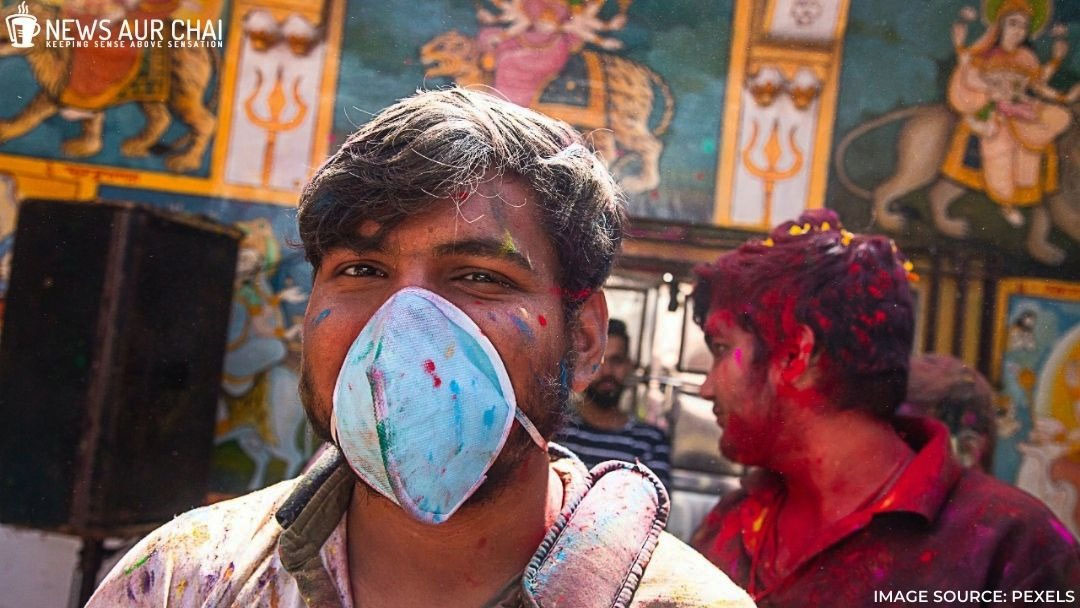
India currently in the second phase of lockdown, is fighting back against COVID-19 with a “cluster containment strategy” to combat the disease within a defined geographic area by early detection of cases, breaking the chain of transmission and consequently preventing its spread.
According to the statement issued by the Indian Health Ministry, India will be following a strategic approach taking into account different possible situations – travel-related cases, local transmission of novel coronavirus, large outbreaks responsive to containment, and widespread community transmission of COVID-19.
The World Health Organization (WHO) on April 2, praised India for its robust and timely efforts to control the spread of coronavirus. There has been no community transmission of COVID-19 since the country went into lockdown, and the average growth factor of cases has declined by 40 per cent, as per the recent reports from the Union Health Ministry.
The credit for this mainly goes to the states that are aggressively fighting against the virus. Here are five Indian states that are proactively battling with innovative solutions to check the virus:
Kerala
After successfully defeating the Nipah virus in 2018, and dealing with two consecutive floods, Kerala utilized these experience to check the COVID-19 spread after a slightly rough start. It was the first Indian state to report COVID-19 case and topped the list at one point. However, it has now managed to flatten the curve of the virus successfully. Out of a total 402 cases, 270 have cured/discharged, and three have scummed to died—active cases remain around 140.
The meticulous contact-tracing process and then publishing of the route map of an infected person, along with self-isolation of contacted people helped the state to combat the virus.
The excellent inter-department coordination at all levels (state, district and village panchayats) helped Kerala to achieve the success. Moreover, being transparent with the public regarding the situation, and 100 per cent checking the quarantine period by deploying officers to go to every household further helped the state.
The government launched a mobile app, GoK Direct, to check the spread of false information. The state also started a “walk-in facility” for people to get tests safely.
#IndiaFightsCorona
To combat the #coronavirus pandemic, Kerala has undertaken various initiatives including an INR 20,000 Cr package aimed at overcoming the economic impact of #Covid_19 & GoK Direct app to track the coronavirus updates! #WarAgainstVirus #CoronavirusOutbreakIndia pic.twitter.com/2yjwGjzh0X— Invest India (@investindia) March 21, 2020
Besides this, an initiative called the CoronaSafe Network has been created, with two major components: the Corona Literacy Mission and the Corona Care Centre to create awareness about COVID-19.
Odisha
The Eastern state of India is no exception to the natural disasters, the cyclone Fani which hit the state during the early months of 2019 resulted in the death of 89 people. The state had suffered around 25 per cent of India’s natural disasters, meaning that crisis precautions were already in place. The cyclone shelters, thousands in number is now being used to house migrant workers along with food.
As on 20th April, the following areas have been classified as #COVID19 Containment Zones across #Odisha. For any health assistance, call 104 Health Helpline. #coronavirus #OdishaFightsCorona pic.twitter.com/sAV4Yk5PNd
— H & FW Dept Odisha (@HFWOdisha) April 20, 2020
It was the first Indian state to impose complete lockdown (before India imposed it as a whole). It was also the first state to announce exclusive COVID-19 hospitals and gave free medical treatment to all COVID-19 patients.
The state’s containment programme was rooted in the strategic use of IT. It identified the highest-risk category people coming from abroad to put them in home quarantine to contain the spread. As per the state’s IT Secretary, Manoj Mishra, over 5,000 international returnees and about 35,000 domestic returnees from COVID-19-affected states had registered and were asked to home quarantine.
As part of Odisha's fight against #COVID-19, more than 1000 Self Help Groups of Mission Shakti have achieved the milestone of making 2 million masks during lockdown. 1/2#OdishaFightsCorona@WCDOdisha@CMO_Odisha pic.twitter.com/XOmIsclcTo
— Mission Shakti (@mission_shakti) April 17, 2020
Amidst all the crisis, lack of protective gear for frontline employees were another issue. The state’s Mission Shakti Self Help Groups (SHGs) started making masks in bulk to avoid any shortage (wearing them outside is now compulsory). As per officials, SHGs have made more 1.5 million cotton masks and also running village panchayat-level kitchen centres to cook meals for those in need.
The government also paid out advance social pension of four months to around 2.8 million beneficiaries.
Maharastra
One of the most populous states of India-Maharashtra currently leads the table of COVID-19 with a total of 4,203 cases. The state has come up with a cluster containment strategy to deal with the virus and is using data analytics, drones and traditional patrolling methods to survey crowded places.
In every district, two to three drones are being deployed to monitor movements within the streets. A drone can cover a kilometre area once used. If the police spot anybody roaming, a team is immediately dispatched to take action. The state has further begun mass patrolling, reinforcing the message to stay inside.
Uttar Pradesh
India’s most populated state with approximately 200 million people, has managed well to keep the cases upto 1,084. The state further sealed all the 160 hotspots completely. Due to the spike in the number of cases during the early days of April, the Chief Minister of Uttar Pradesh Yogi Adithyanath decided to increase the number of testing lab within the state.
The state government established a COVID Care Fund, to expand testing and treatment facilities; 2,400 tests are being done daily. The government is already working to support the manufacturing units of PPE, N95 masks, triple-layer masks, thermal analysers, ventilators and other equipment.
The state administration is making sure to provide food to all with the help of two platforms – Annapurna and Supply Mitra. The Annapurna gives the location of free cooked items and food packets, while the supplymitra-up.com website has listed names of kirana stores and ration shops, names of proprietors and their contact details, who are carrying out home delivery in each colony across the state.
Rajasthan
The Bhilwara district of Rajasthan, once the worst hit by COVID-19, is now being praised as a model for the rest of the country. It has gone into a complete lockdown backed with a curfew, and the entire population went into health screening.
During the continuing lockdown, there is no relaxation, and essential items are being delivered to city residents at their doorstep. Initially, the residents had issues with such stringent restricts as they were not able to get basic supplies.
As on April 20, the state has 1,478 total confirmed cases out of which 183 have recovered, and 14 deaths have been reported.
Every state in India is doing its best to combat the virus, know the fact that a community spread will only take a few days to reach the entire population of 1.37 billion.






2 Comments